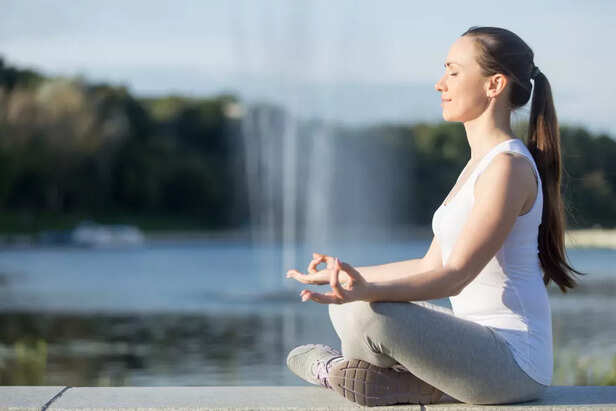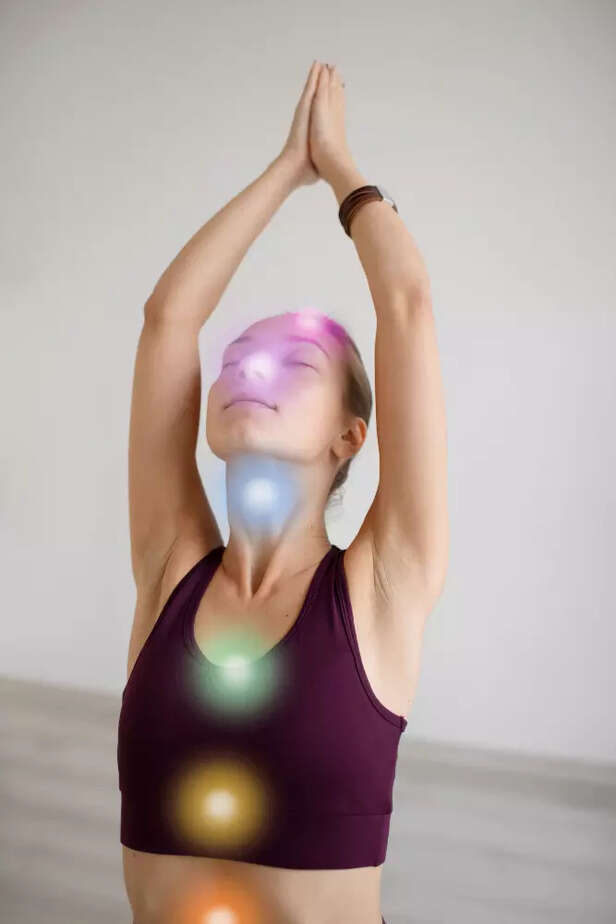Losing Focus? Nadi Pranayama Is Your Ancient Secret.
Mrigank Gaikwad | Mon, 28 Apr 2025
In today’s stressful world, pranayama offers a powerful, science-backed solution. This article reveals how ancient breathing techniques lower stress, balance the brain, and boost emotional resilience. Learn simple methods like 4-7-8 breathing and Nadi Shodhana to calm your mind, improve clarity, and rewire your brain for lasting peace.
Losing Focus? Nadi Pranayama Is Your Ancient Secret.
( Image credit : Freepik )
In today’s fast-paced world, stress and anxiety are common challenges. While modern medicine offers solutions, ancient yogic breathing techniques—pranayama—provide a natural, science-backed way to restore mental balance. Research now confirms what yogis have known for centuries: controlled breathing can rewire your brain, reduce stress, and enhance emotional well-being.
This article explores the scientific mechanisms behind pranayama’s calming effects and how you can use these techniques to cultivate peace and clarity.
1. Triggers the Relaxation Response (Parasympathetic Nervous System)

Your autonomic nervous system has two key branches:
Sympathetic Nervous System (SNS) – Activates "fight-or-flight" (stress, rapid heartbeat).
Parasympathetic Nervous System (PNS) – Promotes "rest-and-digest" (calm, relaxation).
Slow, deep breathing (e.g., 4-7-8 breathing) signals safety to the brain, lowering cortisol (the stress hormone).
Extended exhalations (longer than inhalations) stimulate the vagus nerve, which slows heart rate and induces calm.
A 2017 study in Frontiers in Human Neuroscience found that slow breathing (6 breaths per minute) significantly increased parasympathetic activity and reduced anxiety.

Many people unknowingly over-breathe (hyperventilate) when stressed, reducing CO₂ levels and causing dizziness or panic.
Techniques like Nadi Shodhana (Alternate Nostril Breathing) balance O₂ and CO₂, improving focus and relaxation.
Bhramari Pranayama (Humming Bee Breath) increases nitric oxide, which dilates blood vessels and calms the mind.
Scientific Evidence:
A 2019 study in Nature showed that controlled breathing improves oxygen efficiency and reduces anxiety.
3. Reduces Amygdala Overactivity (The Brain’s Fear Center)

The amygdala processes fear and stress. Chronic stress keeps it overactive, leading to anxiety and emotional reactivity.
Deep breathing decreases amygdala activation, as seen in MRI studies.
Ujjayi Pranayama (Ocean Breath) increases gamma-aminobutyric acid (GABA), a neurotransmitter that reduces anxiety (similar to anti-anxiety medications).
Research in Psychiatry Research: Neuroimaging (2016) found that yogic breathing reduces stress-related brain activity.
4. Boosts Mood-Enhancing Neurochemicals

Pranayama doesn’t just reduce stress—it also elevates mood.
Increases serotonin (the "happiness hormone").
Releases endorphins (natural painkillers and mood boosters).
Kapalabhati (Skull-Shining Breath) energizes while reducing stress.
A 2020 study in Journal of Clinical Psychology found that pranayama significantly reduced depression symptoms.
5. Improves Heart Rate Variability (HRV) for
HRV measures how well your heart adapts to stress. Higher HRV = better stress resilience.
How Pranayama Helps:
Coherent Breathing (5-6 breaths per minute) optimizes HRV, improving emotional regulation.
Helps prevent burnout and chronic stress.
A study in Applied Psychophysiology and Biofeedback (2018) showed that pranayama enhances HRV, improving stress management.

1. 4-7-8 Breathing (Instant Relaxation)
Inhale for 4 sec → Hold for 7 sec → Exhale for 8 sec.
Benefits: Quickly reduces anxiety and aids sleep.
Close right nostril → Inhale left → Close left → Exhale right → Repeat.
Benefits: Balances brain hemispheres, enhances focus.
Inhale deeply → Exhale with a soft humming sound (like a bee).
Benefits: Sootes nerves, reduces anger and frustration.
Pranayama is a powerful, free, and accessible tool backed by neuroscience. Just 5-10 minutes daily can:
✔ Lower stress hormones
✔ Increase mental clarity
✔ Improve emotional resilience
Try it today—your mind will thank you!
Unlock insightful tips and inspiration on personal growth, productivity, and well-being. Stay motivated and updated with the latest at My Life XP.
This article explores the scientific mechanisms behind pranayama’s calming effects and how you can use these techniques to cultivate peace and clarity.
How Pranayama Affects Your Brain and Body.
1. Triggers the Relaxation Response (Parasympathetic Nervous System)

Yoga and Breathwork
( Image credit : Freepik )
Your autonomic nervous system has two key branches:
Sympathetic Nervous System (SNS) – Activates "fight-or-flight" (stress, rapid heartbeat).
Parasympathetic Nervous System (PNS) – Promotes "rest-and-digest" (calm, relaxation).
How Pranayama Helps:
Extended exhalations (longer than inhalations) stimulate the vagus nerve, which slows heart rate and induces calm.
Scientific Evidence:
2. Balances Oxygen and Carbon Dioxide for Optimal Brain Function

Pranayam to brain activity
( Image credit : Freepik )
Many people unknowingly over-breathe (hyperventilate) when stressed, reducing CO₂ levels and causing dizziness or panic.
How Pranayama Helps:
Bhramari Pranayama (Humming Bee Breath) increases nitric oxide, which dilates blood vessels and calms the mind.
Scientific Evidence:
3. Reduces Amygdala Overactivity (The Brain’s Fear Center)

Anger and Fear
( Image credit : Freepik )
The amygdala processes fear and stress. Chronic stress keeps it overactive, leading to anxiety and emotional reactivity.
How Pranayama Helps:
Ujjayi Pranayama (Ocean Breath) increases gamma-aminobutyric acid (GABA), a neurotransmitter that reduces anxiety (similar to anti-anxiety medications).
Scientific Evidence:
4. Boosts Mood-Enhancing Neurochemicals

Happy people
( Image credit : Freepik )
Pranayama doesn’t just reduce stress—it also elevates mood.
How Pranayama Helps:
Releases endorphins (natural painkillers and mood boosters).
Kapalabhati (Skull-Shining Breath) energizes while reducing stress.
Scientific Evidence:
5. Improves Heart Rate Variability (HRV) for Emotional Resilience
How Pranayama Helps:
Helps prevent burnout and chronic stress.
Scientific Evidence:
3 Simple Pranayama Techniques to Calm Your Mind

Yoga
( Image credit : Freepik )
1. 4-7-8 Breathing (Instant Relaxation)
Benefits: Quickly reduces anxiety and aids sleep.
2. Nadi Shodhana (Alternate Nostril Breathing)
Benefits: Balances brain hemispheres, enhances focus.
3. Bhramari (Humming Bee Breath)
Benefits: Sootes nerves, reduces anger and frustration.
Rewire Your Brain with Breath
✔ Lower stress hormones
✔ Increase mental clarity
✔ Improve emotional resilience
Try it today—your mind will thank you!
Unlock insightful tips and inspiration on personal growth, productivity, and well-being. Stay motivated and updated with the latest at My Life XP.










